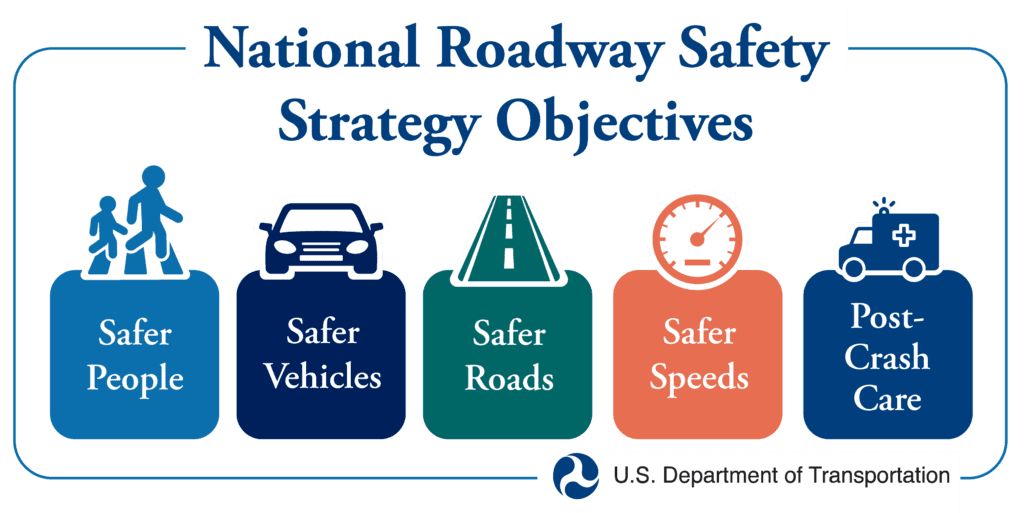 In January, the U.S. Department of Transportation (USDOT) updated their National Roadway Safety Strategy (NRSS). The NRSS outlines a comprehensive approach to reducing fatalities and serious injuries on our nation’s roadways. This effort is aimed towards the ultimate goal of reaching zero fatalities. In support of this approach, safety programs are focused on infrastructure, human behavior, responsible oversight of the vehicle and transportation industry, and emergency response.
In January, the U.S. Department of Transportation (USDOT) updated their National Roadway Safety Strategy (NRSS). The NRSS outlines a comprehensive approach to reducing fatalities and serious injuries on our nation’s roadways. This effort is aimed towards the ultimate goal of reaching zero fatalities. In support of this approach, safety programs are focused on infrastructure, human behavior, responsible oversight of the vehicle and transportation industry, and emergency response.
The NRSS focuses on the Safe System Approach to address roadway safety. The approach is characterized by the implementation of multiple layers of protection to prevent crashes from occurring and minimizing the damages of crashes that do occur. Applying the Safe System Approach involves anticipating human mistakes by designing and managing road infrastructure to keep the risk of a mistake low; and when a mistake leads to a crash, the impact on the human body doesn’t result in a fatality or serious injury. Road design and management should encourage safe speeds and manipulate appropriate crash angles to reduce injury severity. (Source FHWA https://safety.fhwa.dot.gov/zerodeaths/zero_deaths_vision.cfm)
A Safe System Approach incorporates the following principles:
- Death and Serious Injuries are Unacceptable. While no crashes are desirable, the Safe System Approach prioritizes the elimination of crashes that result in death and serious injuries since no one should experience either when using the transportation system.
- Humans Make Mistakes. People will inevitably make mistakes and decisions that can lead or contribute to crashes, but the transportation system can be designed and operated to accommodate certain types and levels of human mistakes, and avoid death and serious injuries when a crash occurs.
- Humans Are Vulnerable. People have physical limits for tolerating crash forces before death or serious injury occurs; therefore, it is critical to design and operate a transportation system that is human-centric and accommodates physical human vulnerabilities.
- Responsibility is Shared. All stakeholders – including government at all levels, industry, nonprofit/advocacy, researchers, and the public – are vital to preventing fatalities and serious injuries on our roadways.
- Safety is Proactive. Proactive tools should be used to identify and address safety issues in the transportation system, rather than waiting for crashes to occur and reacting afterwards.
- Redundancy is Crucial. Reducing risks requires that all parts of the transportation system be strengthened, so that if one part fails, the other parts still protect people.
The full NRSS report is found here.

